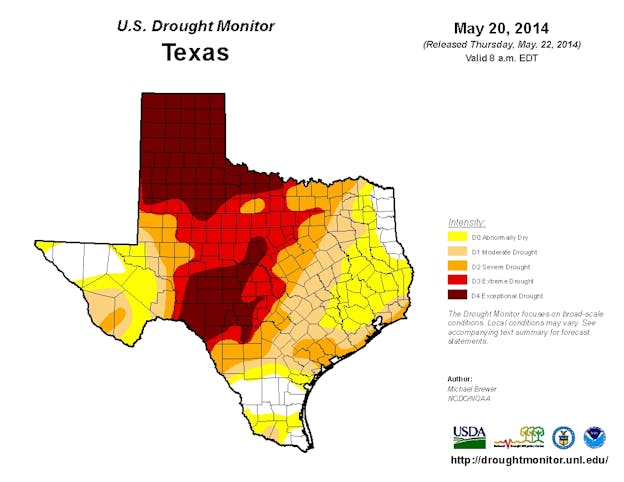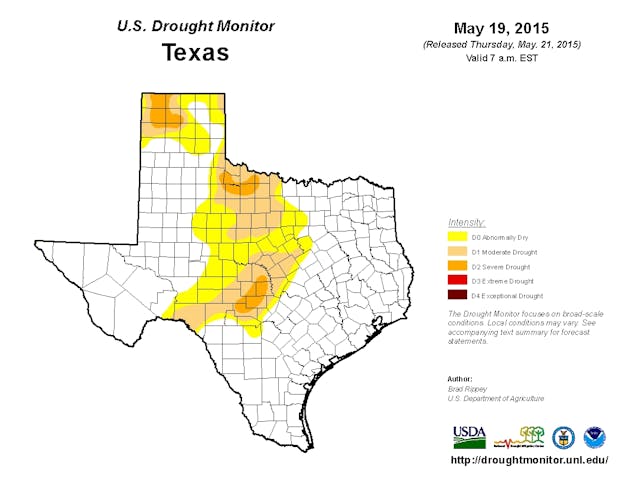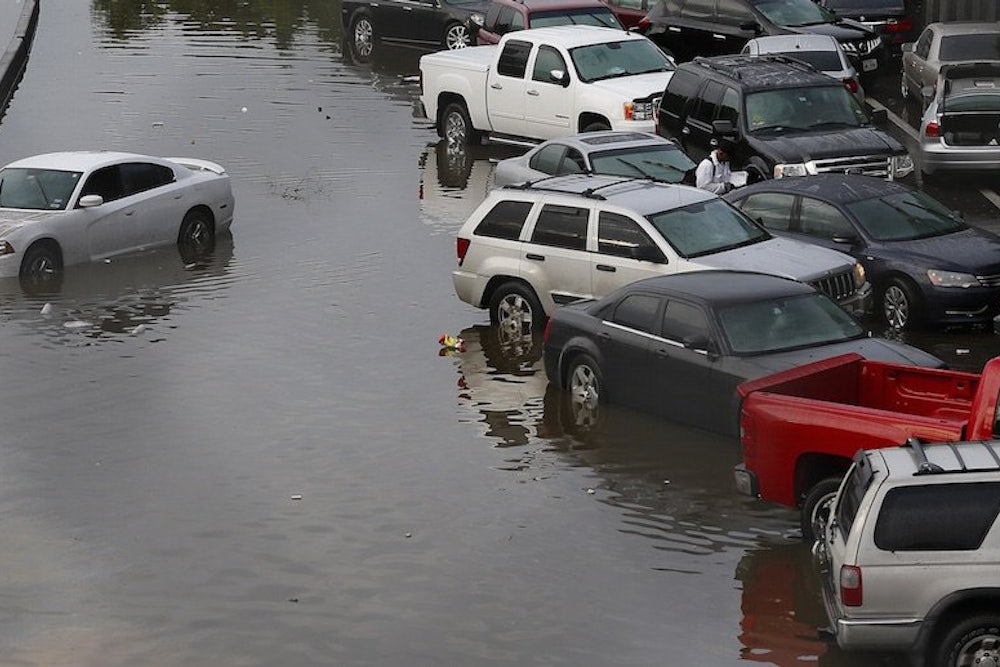Texas waited for rain for five years. It finally saw relief for a multiyear drought this year, but it's come at a tremendous cost: At least five people are dead in flash flooding in Texas and Oklahoma, 12 more are missing, and the economic damage will likely run in the millions of dollars.
In the fall of 2011, flooding was the least of Texans’ fears: Governor Rick Perry declared a three-day “Prayer for Rain in the State of Texas.” The drought then was at its worst, with more than 97 percent of the state in extreme or worse drought.
Just one year ago, 70 percent of the state was in a drought. Forty percent faced extreme conditions, according to the federal U.S. Drought Monitor.

Today, none of the state faces the worst categories of drought. This year's strengthening El Niño has filled Texas’ reservoirs from 62 percent of capacity six months ago to nearly 79 percent. A recent map from the Drought Monitor shows the drastic change:

There’s a chance California will be next—getting needed water, but also mudslides.
"The headlines that you're writing today about Texas and Oklahoma, you could be writing about California in January," NASA climatologist Bill Patzert told Los Angeles Times. "There's something to remember about El Niño—he's a good boy and he's a bad boy because he can deliver drought relief that's much-needed. But all that water coming so fast is like trying to catch water out of a fire hose with a champagne glass."
It's also possibile that a wet season still won’t help central and southern California, because the state is so dependent on snowpack in the northern region.
These events will grow even worse with climate change, since manmade global warming causes the weather to move in both extremes—fueling prolonged droughts and more frequent deluges.
